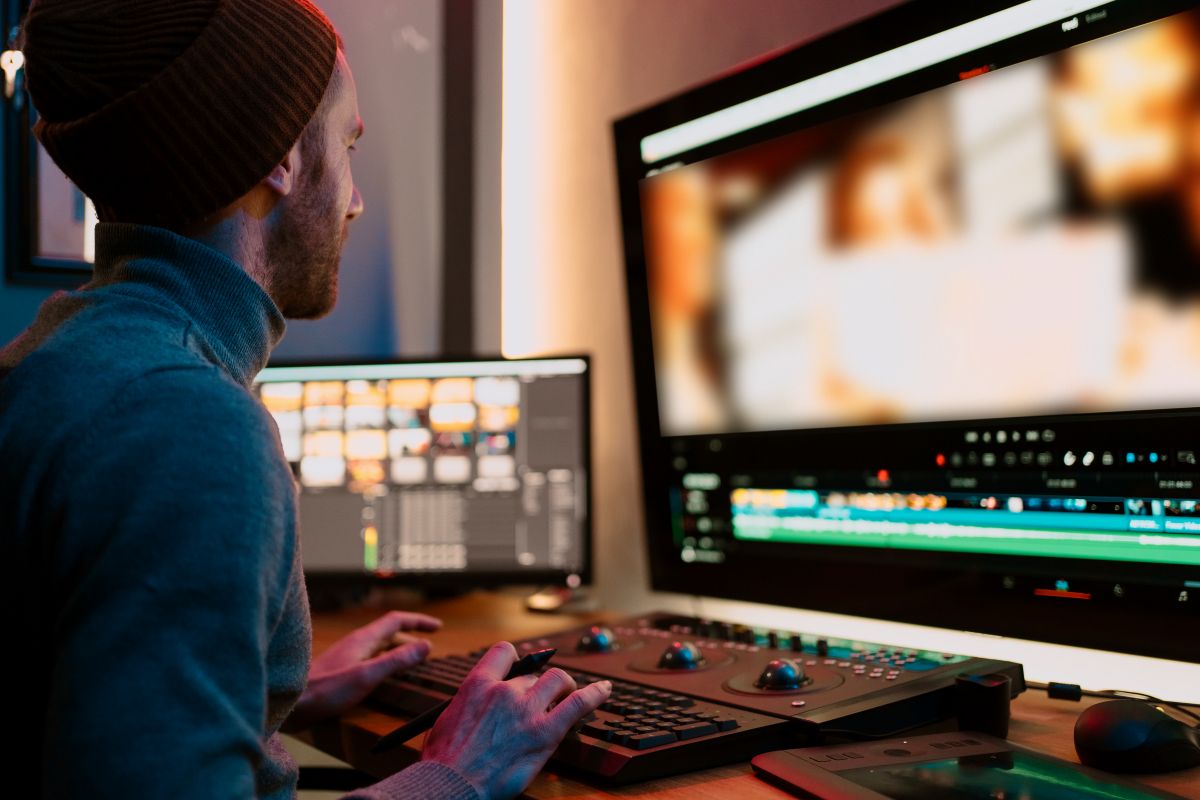
Video Production Companies in Johannesburg: Video Subtitles
Have you ever sat down to watch a show at a friend’s house only to realise — they do not use subtitles? Suddenly, every softly mumbled line becomes a puzzle. Or maybe you are watching something alone, and the moment you glance away from the screen, even slightly, the dialogue seems to turn into gibberish. Then you read the subtitles, and somehow it feels like you can hear what they are saying again. Subtitles have become a preference for many viewers. They help with focus, clarity, and multitasking. For others, subtitles are essential — offering meaningful access to content for those who are deaf or hard of hearing. They are also the only bridge across language barriers when watching foreign-language content. Despite these uses, subtitles are still treated as an optional extra in many video projects. In practice, they do far more than fill silence — and they deserve a closer look. Video production companies in Johannesburg are uniquely positioned to think about subtitles not as a last-minute fix, but as part of a thoughtful, viewer-aware approach to creating video content. In this article we will explore the lesser-known — but highly practical — roles that subtitles play, and why they are worth thinking about early in your production process.
Subtitles Are Not Just for Accessibility (But That Is Where Most Stop)
Yes, subtitles make video content more inclusive. That should be the baseline, not the end goal. Most viewers today expect subtitles. Why? Because over 80% of videos on social media are watched on mute. A Facebook study confirmed this years ago, and the trend has only grown.
What is more, subtitle-enabled videos tend to hold attention better. Some research suggests that viewers stay 15% longer when subtitles are available — not just because they can read what is being said, but because the text supports focus, especially when people are distracted.
Video production companies in Johannesburg know how to plan for this from the get-go — considering font choices, readability, pacing, and how subtitles will behave on various devices and platforms.
The Goldilocks Zone of Reading Speed
There is such a thing as “too fast to follow” when it comes to subtitles. Netflix, for example, aims for 17–21 characters per second (CPS). That speed gives enough time to read without rushing, but not so much time that the subtitles drag behind the dialogue.
Shorter is not always better either. Subtitles that pop on and off the screen too quickly leave no room for pauses, tone, or context to land. Pauses, by the way, are not dead air — they help with comprehension and rhythm.
There are free CPS calculators online that help test subtitle timing. This is where experienced video production companies in Johannesburg step in — they can handle subtitle timing in the edit suite so that viewers do not have to think twice about what they are reading.
[Sound Effects] in Brackets: When and Why to Use Them
You have probably seen them before: [applause], [tense music], [footsteps]. These bracketed cues are more than just background noise written out. They help set mood and clarify context, especially in scenes where the audio is not crystal clear or when someone is watching with sound off.
That said, there is a fine line between helpful and excessive. Not every door slam needs a label, and too many brackets start to feel like a poorly formatted screenplay.
Video production companies in Johannesburg can make judgment calls based on tone, context, and audience — choosing when to include these sound cues, and when to let silence do the job.
Netflix-Style Captions: The Subtle Engagement Trick
Netflix did not invent the idea of “emotional” subtitles, but it certainly popularised it. Descriptive captions like “ominous music intensifies” or “nervous laughter” go beyond stating the obvious; they help viewers track emotional shifts, even when they are not fully focused on the screen.
This technique has made its way into brand and B2B videos as well. For example, adding “awkward chuckle” to a customer testimonial can make the moment feel more real — not less.
Video production companies in Johannesburg are increasingly building this approach into their scripts and edits. It is a quiet but effective way to keep viewers tuned in without waving for their attention.
Formatting Secrets Most Tools Do Not Teach
Auto-subtitle tools are everywhere now, but formatting still matters. And most of those tools are not exactly subtle. Bad formatting can break the flow of a video — or worse, make it harder to follow.
A few rules to keep in mind:
- Avoid placing subtitles in the lower third of the screen. That is where UI elements and captions often compete for space.
- Use high-contrast, sans-serif fonts. Skip bright colours unless they match the brand (and are still legible).
- Split lines at natural breaks in speech — not mid-sentence or mid-thought.
Video production companies in Johannesburg know how to adapt these formatting basics across various platforms. What looks good on Instagram Stories might not work the same on a 16:9 YouTube video.
The Hidden SEO Value of Subtitles
Subtitles are not just helpful for viewers. They also help search engines understand what your video is about. When you upload subtitle files (like SRT or VTT formats), they can be crawled and indexed. This gives you an additional place to include keywords — naturally, through the spoken content.
For instance, a logistics company showcasing a drone tour of their warehouse might see improved ranking for terms like “aerial warehouse logistics” simply because those words were spoken and included in subtitles.
Video production companies in Johannesburg can create subtitle files as part of the post-production process, ensuring your content is not only viewer-friendly but search-engine-friendly too.
Localisation Blunders (And How to Avoid Them)
Subtitles can easily get lost in translation — especially when idioms, jokes, or cultural references are involved. A line like “break a leg” makes sense in English, but it might sound genuinely threatening in another language.
That is why direct translation is not enough. It takes someone who understands tone, context, and phrasing. These professionals are often called transcreators — people who rewrite content for meaning, not just words.
When videos need to reach a global audience, video production companies in Johannesburg often work with local language specialists to make sure translations feel natural rather than robotic.
The Subtitle Consistency Checklist
Subtitles work better when they follow rules. That does not mean sucking the creativity out of them — just setting expectations. A style guide helps with that.
Some questions worth addressing:
- How should speaker labels look? (e.g., Narrator: vs. Sam:)
- Should trailing speech use ellipses, or not?
- What about emojis? (Hint: probably best to leave them out of corporate videos.)
Video production companies in Johannesburg typically develop internal guidelines for consistency, especially for clients producing regular video content across departments or campaigns.
The Biggest Subtitle Mistakes Companies Make
Here are some of the most common missteps:
- Hard-coded subtitles: These are “burned into” the video and cannot be edited later. This makes localisation and future updates difficult.
- Ignoring platform specifications: What works on YouTube might not fit well on LinkedIn or Instagram.
- Out-of-sync subtitles: Even a half-second delay is noticeable. It breaks flow and can make viewers lose interest in the content.
Working with experienced video production companies in Johannesburg helps avoid these issues — because these are the kinds of details they watch for during the editing process.
How to Test If Your Subtitles Actually Work
Subtitles are not just a set-it-and-forget-it feature. There are ways to test their impact:
- A/B testing watch time with and without subtitles.
- Using heatmap tools to see where viewers focus on the screen.
- Gathering feedback from viewers: Were the subtitles helpful? Distracting? Clear?
Video production companies in Johannesburg can integrate these kinds of tests into post-project reviews or ongoing video campaigns — offering clients insight into how their content performs.
Final Thought
Subtitles are not just for those with hearing difficulties or foreign-language content. They shape how people watch, understand, and stay with videos. From pacing and tone to formatting and translation, subtitles play a much broader role than many people realise.
This is why it helps to work with video production companies in Johannesburg that understand both the technical and creative sides of subtitle planning. When done properly, subtitles can make content easier to follow, more discoverable, and more watchable — without stealing the spotlight.
Whether your next video is a brand profile, a product demo, or a training series, subtitles deserve a spot in the conversation. Preferably, right from the beginning.
Sound off? Subtitles on. If your video needs to work in more than one way — across platforms, languages, or volume settings — Sound Idea Digital can help you plan for that from the start. Send us a message — we are ready when you are to talk about your next project.
We are a full-service Web Development and Content Production Agency in Gauteng specialising in Video Production, Animation, eLearning Content Development, Learning Management Systems, and Content Production.
Contact us for a quote. | enquiries@soundidea.co.za | https://www.soundideavideoproduction.co.za| +27 82 491 5824 |

